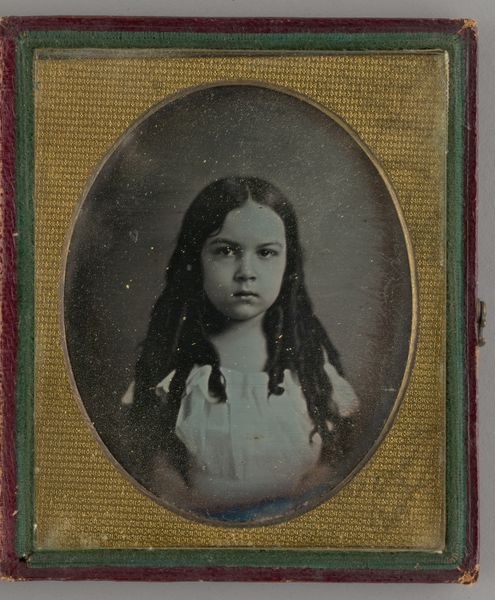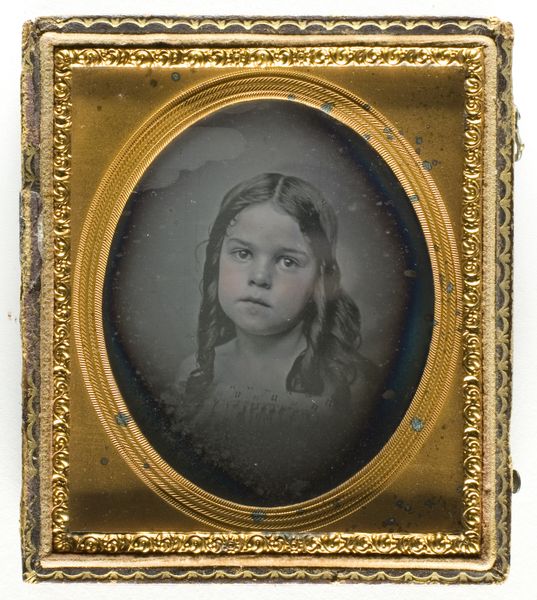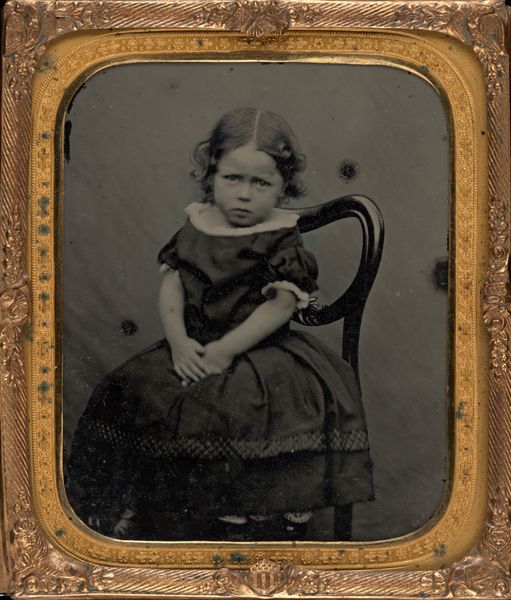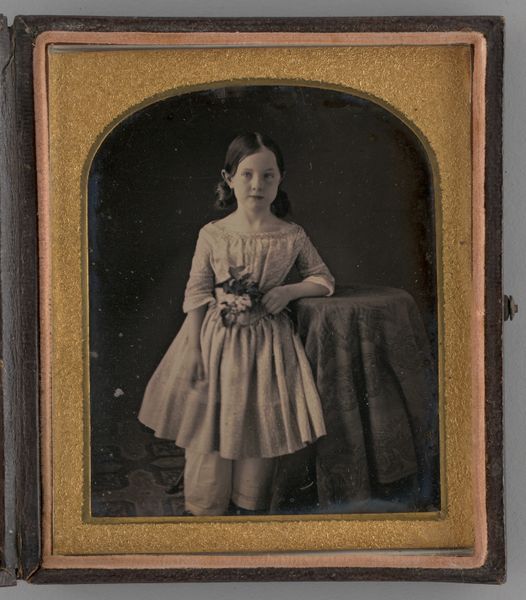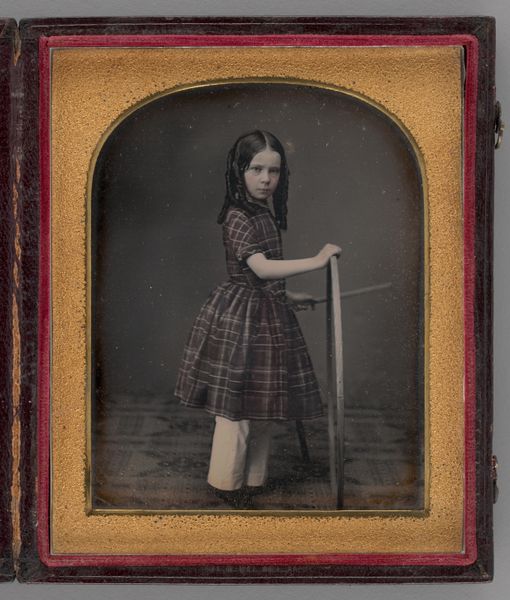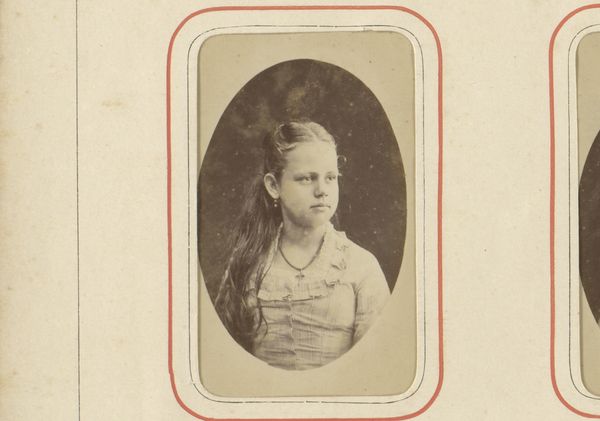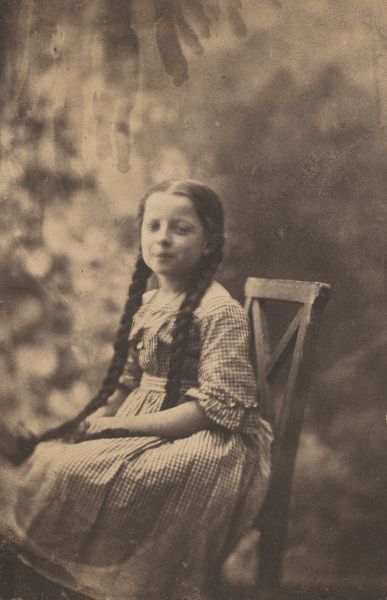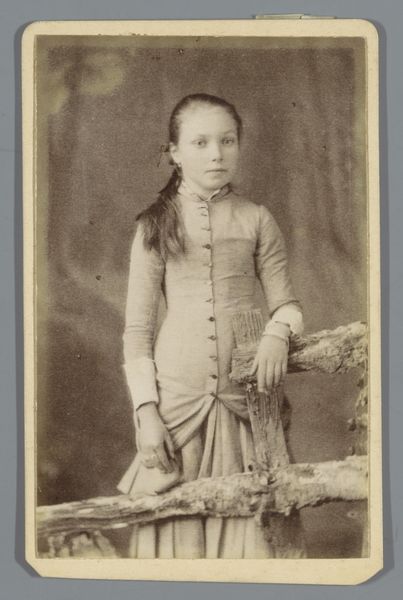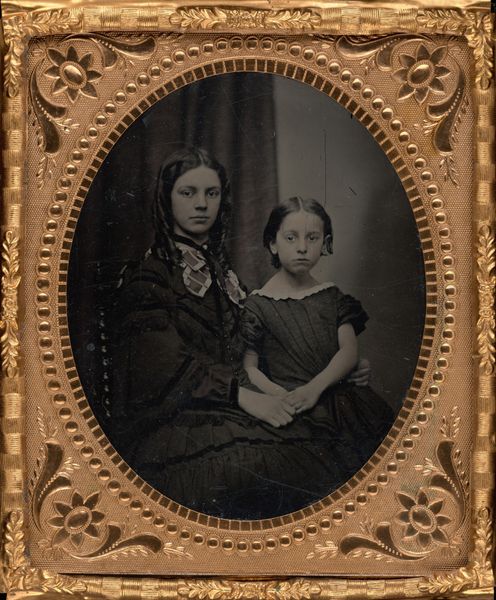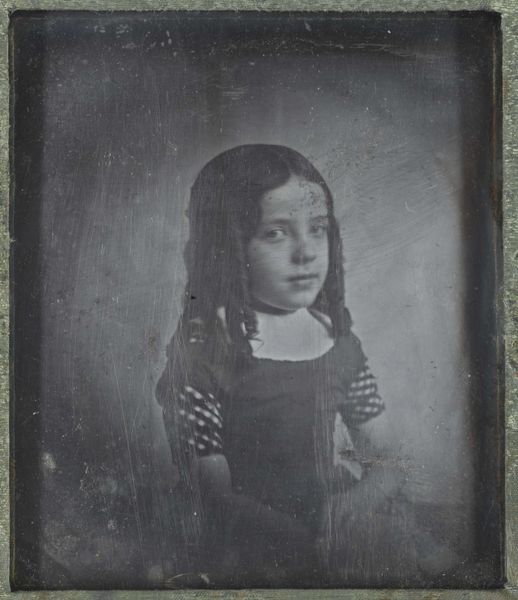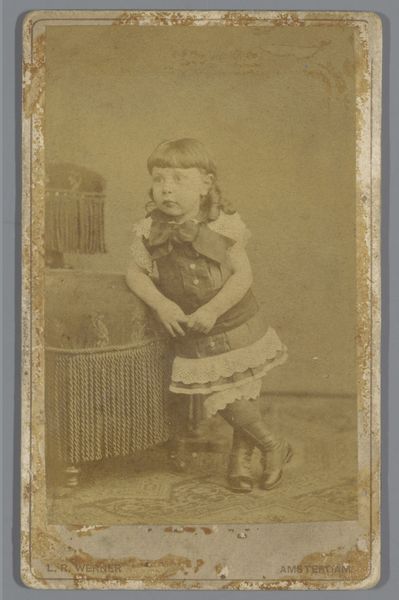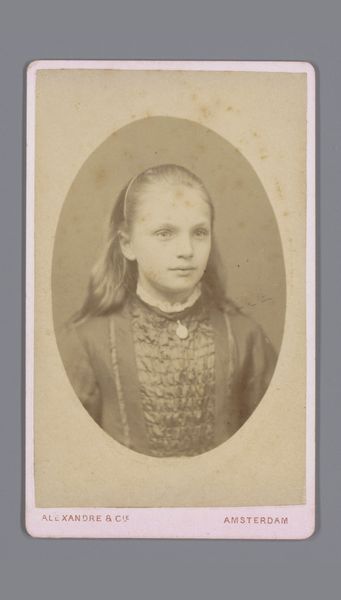
daguerreotype, photography
#
portrait
#
16_19th-century
#
daguerreotype
#
photography
#
coloured pencil
#
united-states
#
realism
Dimensions: 8.2 × 7 cm (3 1/4 × 2 3/4 in., plate); 9.2 × 16 × 1 cm (open case); 9.2 × 8 × 1.5 cm (case)
Copyright: Public Domain
Curator: Looking at this portrait, there's a stillness that really draws me in. It's an "Untitled (Portrait of a Girl)" made around 1855. We believe it originates from the United States. Editor: There's definitely a sense of melancholic rigidity here. The grey-blue background and ornate border visually imprison the young girl, reinforcing that serious, almost unhappy, expression. Curator: It's a daguerreotype, an early photographic process, which undoubtedly influenced that rigid posture. People had to remain still for extended periods. Imagine the social context—photography becoming accessible, a shift in how people documented themselves. Laborious, specialized work...the plate preparation, the darkroom expertise required. Editor: I'm more focused on the visual language, the composition itself. The face is so central; we must grapple with that gaze. Notice the gentle blurring around the edges and that singular splash of almost hyper-real color within the velvet drape below, these effects direct your focus intensely to her somber face. The symmetry, broken only by the fall of her braids, conveys stillness but the almost defiant expression contradicts this! Curator: Right, the composition is key. And that seriousness… portraiture, at the time, was about projecting an image of respectability. Consider the material investment –the clothing, perhaps borrowed or specially made for the occasion, also, the backdrop and then, the actual silver-plated copper. What message were her parents hoping to communicate? Editor: The materiality adds depth to our understanding of mid-19th century portraiture conventions, of course, yet I feel her psychological state transcends the photographic requirements of the time and the conventions of class. Curator: I wonder about the economics involved. What sort of financial strain would this pose for many families at the time, considering the disposable income versus essential expenditure balance and then think, what about its long term effects for American portraiture? Did the costs exclude entire swathes of people? Editor: Her gaze pulls you back in and renders all socio-historical considerations quite distant! In short, it transcends that to offer genuine insight into childhood experience! Curator: Perhaps we see echoes of broader societal pressures bearing down, even on someone so young. I find I'm left pondering what her life held for her as a woman in the 19th century. Editor: And for me, the enduring puzzle of portraiture: what remains concealed beneath its surfaces.
Comments
No comments
Be the first to comment and join the conversation on the ultimate creative platform.
